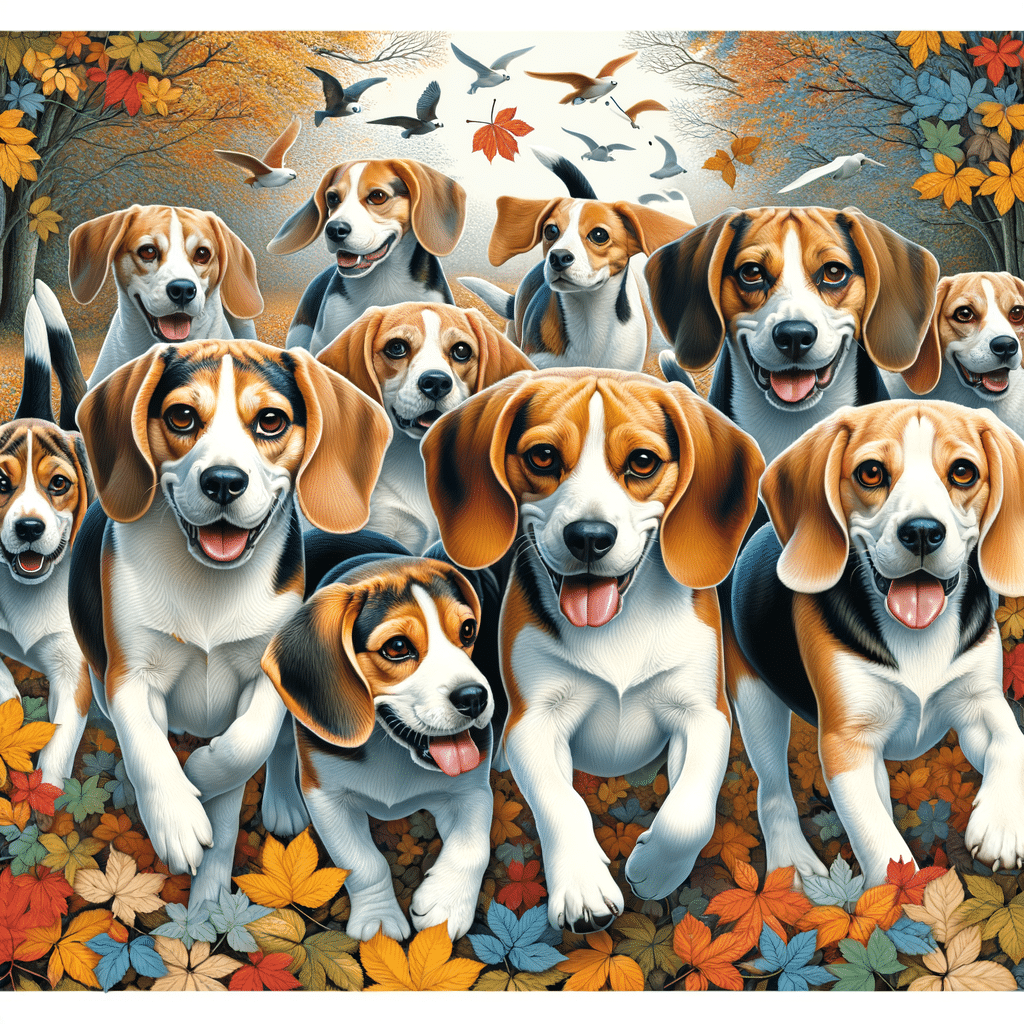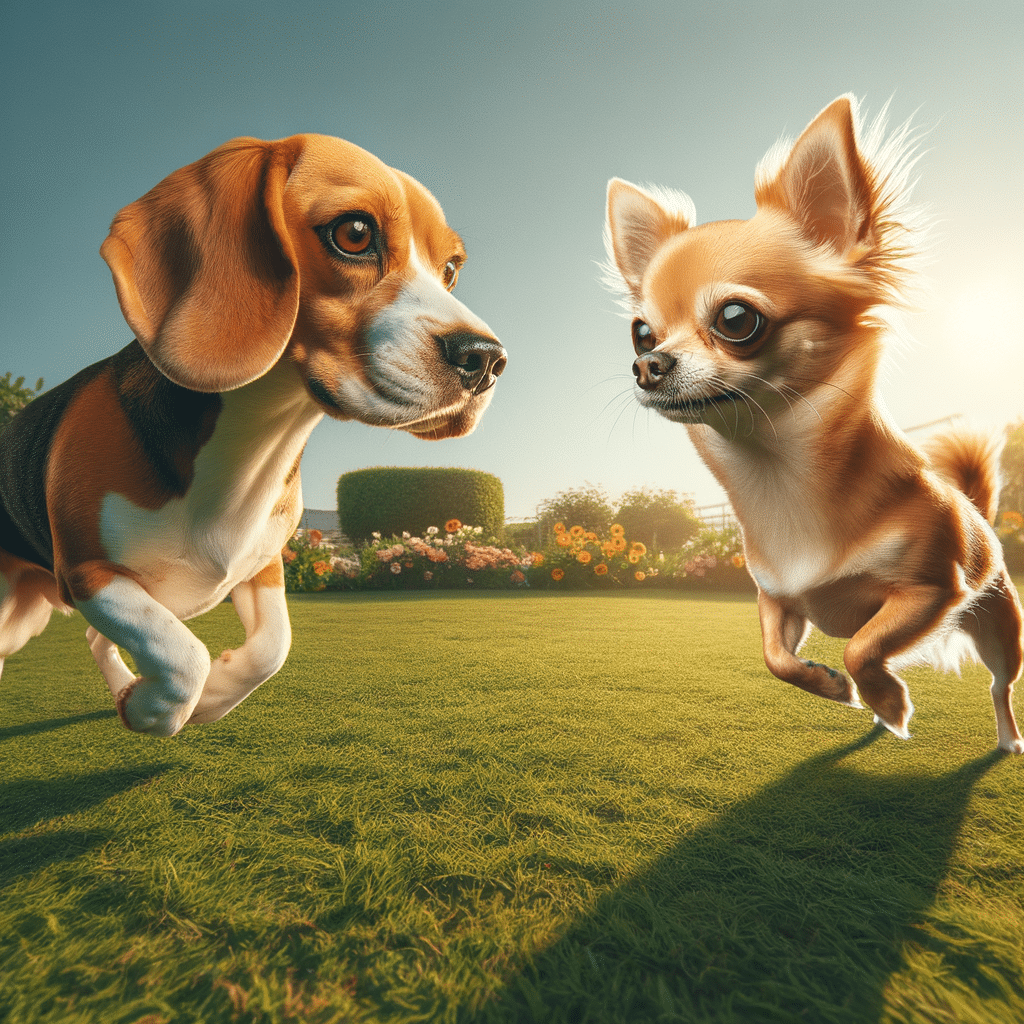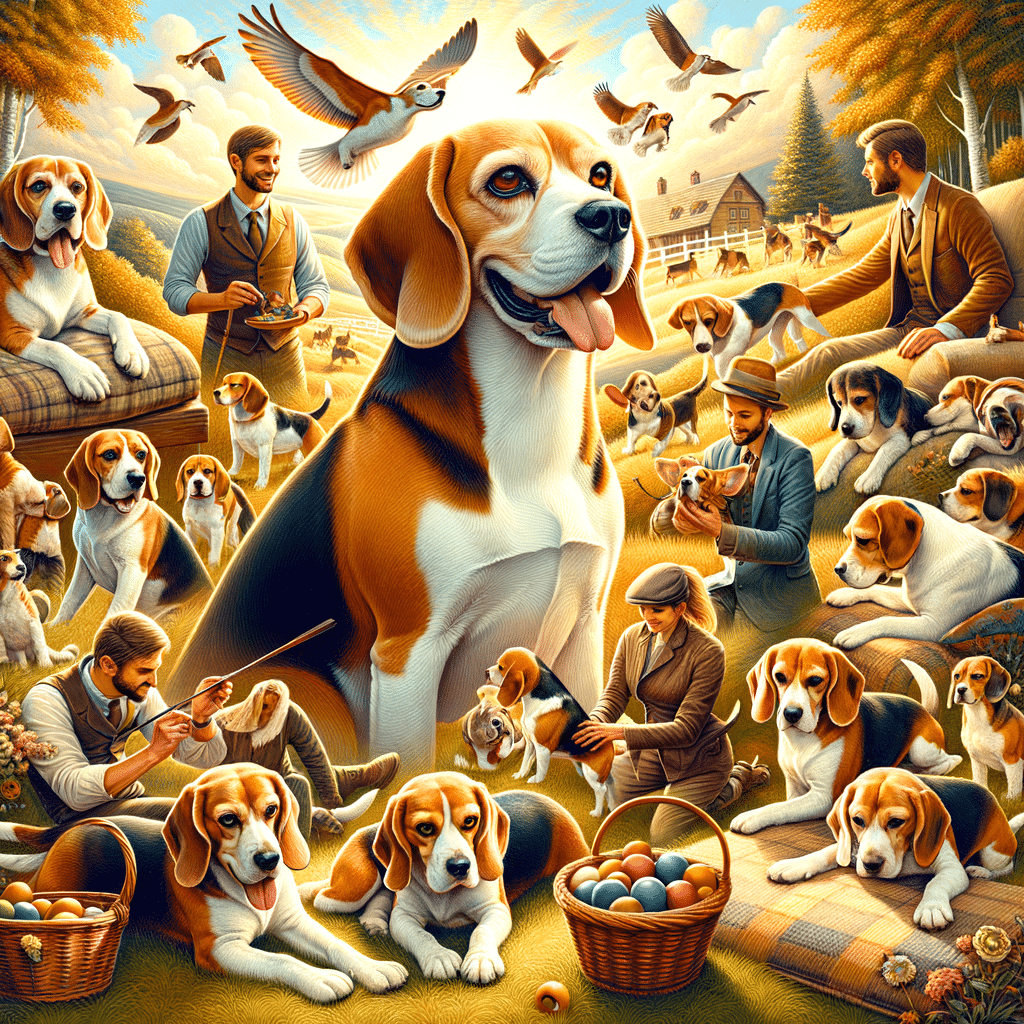When considering a dog as a new pet for your family, choosing between a beagle and a Siberian husky involves evaluating differences beyond their size and coat colors. Detailed comparison articles like this can be invaluable tools when comparing a beagle vs. a Siberian husky.
In This Article
The beagle, known for its friendliness and moderate size, makes a great pet for first-time dog owners, being easy to manage and suitable for smaller living spaces. On the other hand, the Siberian husky, with its striking appearance and vibrant energy, requires an experienced hand because of its need for extensive exercise and independent temperament.
Physical characteristics set these popular dog breeds apart, with the beagle being smaller and the Siberian husky having a sturdy build, suitable for enduring cold climates. The history of each breed group is fascinating. Beagles are trusty working dogs and hunting companions with a strong sense of smell.
Siberian huskies were originally bred to help them pull sleds in harsh northern environments. Understanding their temperaments is critical. Beagles have a friendly disposition and a knack for companionship. According to the American Kennel Club, huskies are notoriously free-spirited and may carry a more challenging personality for those unfamiliar with the breed.
Highlights
- Selecting between a beagle and a Siberian husky depends on the owner’s experience and the ability to meet the breed’s needs.
- Beagles are smaller, easier for new owners, and good with children, while huskies are larger, more challenging, and have high exercise requirements.
- Each breed’s unique history has shaped traits like the beagle’s scent-tracking ability and the husky’s independence and stamina.
Physical Characteristics
When considering the physical traits of beagle and Siberian husky breeds, it is important to note the distinct differences in appearance and body structure that make each breed unique.
Appearance
The beagle has a sturdy and compact build. It has a broad head with large, brown or hazel eyes and soft, drooping ears. Its coat is usually short, dense, and weather-resistant, and it comes in a variety of colors, including tri-color, red and white, and lemon.
In contrast, the Siberian husky is known for its wolf-like appearance and well-proportioned body. It has striking blue or brown eyes, or even one of each, known as heterochromia. Huskies have medium-length double coats that can withstand extreme cold temperatures. Their fur comes in various colors and patterns, including black, gray, red, and white.
Size and Weight
The beagle is considered a small to medium-sized dog, standing about 13 to 15 inches tall at the shoulder. The breed’s weight is generally 20 to 30 pounds, which reflects their compact form.
The Siberian husky, a medium-sized dog, is larger, standing at approximately 20 to 23.5 inches at the shoulder. They typically weigh between 35 and 60 pounds. Their weight and size indicate their strength and endurance as sled dogs.
Both breeds have tails that reflect their lineage and purpose. The beagle’s tail is moderately long and carried high but not over the back. The Siberian husky’s tail is bushy and carried in a sickle curve.
Breed Origins and History
The beagle and Siberian husky have storied pasts that highlight their rich heritage and distinct characteristics that are shaped by their origin.
Beagle Origins
The beagle is a breed with roots tracing back to England before the Roman era. They have long been hunters because of their keen sense of smell and tracking instinct. These dogs were designed to hunt in packs or alone and are thought to have evolved from various breeds of hounds. Throughout history, beagles have been prized for their tracking abilities and were bred to be smaller for hare hunting, resulting in their modern size.
Siberian Husky Origins
The Siberian husky originates from the Northeastern part of Siberia, Russia, where it was bred by the Chukchi people. Its history spans several thousand years, during which time it was essential for transportation, especially as a sled dog, and valued for its stamina and strength. Genetic studies reveal that Siberian huskies are among the oldest dog breeds linked to ancient canines such as the Taimyr wolf.
Personality and Temperament
Beagles and Siberian huskies possess distinct personality and temperament traits that prospective pet owners should consider. Beagles are known for their affectionate and loving nature, often forming strong bonds with family members. They tend to be friendly with children and other dogs. However, due to their independent nature, they can display a stubborn streak during training.
In contrast, Siberian huskies are also affectionate, but their temperament leans more towards an independent and free-spirited attitude. They are intelligent but challenging to train due to their willful personalities. Their high prey drive makes them less cat-friendly, and small animals may trigger their chase instincts.
Energy Level
- Beagles have a moderate to high energy level, requiring regular exercise to stay happy.
- Siberian huskies are high-energy dogs who need plenty of physical activity to prevent boredom and potential destructiveness.
Dog-Friendly
- Both breeds typically enjoy the company of other dogs but require proper socialization.
Intelligence
- Bare smart and excel in activities involving their keen sense of smell.
- Huskies are cunning and may use their intelligence in ways that test their owner’s boundaries.
When considering either breed, it is crucial to understand that they may manifest these traits differently depending on their personality, upbringing, and training. Both breeds will thrive in environments that provide structure, patience, and ample physical and mental stimulation opportunities.
Care and Health Considerations
Prospective pet owners should consider the breeds’ distinct care needs and potential general health issues when choosing between a beagle and a Siberian husky. Ensuring that these dogs live happy, healthy lives involves understanding their specific exercise, grooming, and common health concerns.
Exercise Needs
Beagle
- Daily exercise: Moderate to high; at least 1 hour
- Activity preferences: Walks, playtime, scent games
Siberian Husky
- Daily exercise: High; 1-2 hours
- Activity preferences: Running, hiking, interactive play
Both breeds are energetic and require daily physical activity, but the Siberian husky typically needs more intensive exercise.
Grooming Requirements
Beagle
- Brushing frequency: Weekly
- Shedding: Moderate
Siberian Husky
- Brushing frequency: Weekly; daily during shedding season
- Shedding: Heavy, especially during seasonal changes
The beagle has low grooming requirements, while the husky’s thick coat necessitates more attention to manage shedding from a dog groomer.
Common Health Issues
Beagle
- Prone to obesity: Monitor diet and exercise regularly.
- Genetic diseases: Hip dysplasia, epilepsy.
- Life span: Typically 12-15 years.
Siberian Husky
- Eye conditions: Cataracts, progressive retinal atrophy.
- Hip dysplasia: Less common compared to other large breeds.
- Life span: Approximately 12-14 years.
Both breeds can have hereditary health problems, though the husky may be more susceptible to eye conditions and the beagle to obesity and hip dysplasia. Regular veterinary check-ups and genetic screening can help manage these health considerations. Consider buying AKC pet insurance to help with any potential healthcare costs.
Frequently Asked Questions
When comparing the beagle and Siberian husky, potential owners frequently ask about size, suitability as pets, temperament, grooming needs, health, and trainability. These factors determine which breed may suit an individual’s lifestyle.
Which breed is larger, the beagle or the Siberian husky?
The Siberian husky is the larger breed, standing at 20 to 23.5 inches tall and weighing between 35 and 60 pounds. In contrast, the average beagle stands between 13 and 15 inches and weighs approximately 20 to 30 pounds.
Can a beagle-husky mix be a good pet?
A beagle husky mix breed can be a good pet for a dog owner with traits from both breeds, often resulting in a medium-sized dog. This dog is typically friendly and playful, suitable for families and active individuals.
What are the major temperament differences between beagles and Siberian huskies?
Siberian huskies are known for their intelligence, independence, and energetic demeanor. In contrast, beagles are often friendly, curious, and merry. Both breeds are social and may show vocal behaviors, like barking and howling.
What are the comparative grooming needs for beagles and Siberian huskies?
Siberian huskies have a thick double coat that requires regular brushing, especially during shedding seasons. Beagles have shorter coats and reduced grooming needs, requiring occasional brushing to remove loose hair.
Which breed tends to be healthier, beagles or Siberian huskies?
Both breeds can be prone to certain genetic health issues, but beagles are a sturdy breed with fewer congenital conditions. Siberian huskies can also be healthy, but they have some predisposition to conditions like hip dysplasia.
Which breed is generally more challenging to train between the beagle and the Siberian husky?
Siberian huskies can be more challenging to train because of their independent nature. Beagles are eager to please but easily distracted by scents, which can also present training challenges. Consistency and patience are key to training both breeds successfully.






